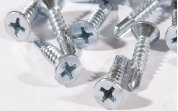Exploring J-Type Foundation Bolts for Structural Stability and Performance
Understanding J-Type Foundation Bolts Essential Components for Structural Integrity
Foundation bolts, particularly J-type foundation bolts, play a critical role in the stability and durability of various structures. These bolts are specifically designed to anchor equipment and structural elements securely to concrete foundations, ensuring that they withstand both static and dynamic loads. In this article, we will explore the characteristics, applications, advantages, and installation of J-type foundation bolts.
What are J-Type Foundation Bolts?
J-type foundation bolts are named for their unique 'J' shape, which features a hook or a loop at one end. This design allows for effective anchoring in concrete, providing a firm grip that helps to prevent vertical movement of the secured structure. Typically made from high-strength steel, these bolts can be coated with various materials to enhance their corrosion resistance, depending on the environment in which they will be used.
Characteristics of J-Type Foundation Bolts
1. Shape and Design The distinctive J shape not only aids in anchoring but also simplifies the installation process. Once embedded in concrete, the hooked end creates a mechanical interlock that adds to the bolt's holding capacity.
2. Material Composition J-type foundation bolts are usually constructed from alloy steel or stainless steel, with different grades available to accommodate specific load requirements and environmental conditions. The selection of material is crucial, as it affects the bolt's tensile strength and resistance to environmental factors such as corrosion.
3. Size and Customization These bolts come in various lengths and diameters, enabling engineers to choose the appropriate size based on the load requirements and the specific characteristics of the structure being anchored. Custom jaw configurations can also be manufactured for unique applications.
Applications of J-Type Foundation Bolts
J-type foundation bolts are widely utilized across many industries, including
- Construction and Civil Engineering In the construction of buildings, bridges, and other infrastructures, J-type foundation bolts are essential for anchoring columns, beams, and heavy equipment that require stable foundations.
- Manufacturing Facilities Production machinery often requires anchoring to prevent movement during operation. J-type foundation bolts offer a reliable solution for securing these heavy machines to their bases.
- Wind Turbines The stability of renewable energy structures, such as wind turbines, relies on strong and resilient foundation anchoring. J-type foundation bolts are crucial for ensuring that these large installations can withstand extreme weather conditions.
- Telecommunication Towers Similarly, J-type foundation bolts are essential in stabilizing telecommunication towers, which must endure considerable wind loads and other environmental pressures.
foundation bolt j type

Advantages of J-Type Foundation Bolts
The use of J-type foundation bolts provides several benefits
1. Enhanced Stability The unique design ensures that the anchored component remains secure, reducing the risk of structural failure or movement.
2. Ease of Installation J-type bolts can be easily placed into concrete forms before the concrete is poured or inserted into cured concrete, streamlining the construction process.
3. Corrosion Resistance With the option for protective coatings, these bolts can effectively resist environmental factors, extending their lifespan and reducing maintenance costs.
4. Cost-Effectiveness Given their durability and reliability, utilizing J-type foundation bolts can lead to significant savings in long-term repair and replacement costs.
Installation of J-Type Foundation Bolts
The installation process for J-type foundation bolts involves several key steps
1. Site Preparation Ensure the installation site is clean and adequately prepared to receive the bolts. This may involve excavating the area and setting forms for the concrete.
2. Placement Position the J-type bolts in the designated locations, ensuring that they are vertical and properly aligned. This can be facilitated by using templates.
3. Concrete Pouring Once the bolts are secured in the correct position, concrete can be poured around them. It's vital to allow the concrete to cure adequately before any loads are applied.
4. Inspection After installation, thorough inspections should be conducted to ensure that the bolts are securely anchored and the surrounding concrete is intact.
In conclusion, J-type foundation bolts are indispensable components in the construction and maintenance of various structures. Their unique design, coupled with their strength and durability, ensures that buildings and equipment remain stable and secure under various loads. As industries continue to evolve, the demand for reliable anchoring solutions like J-type foundation bolts will only grow, underscoring their importance in modern engineering.
-
Weatherproof Plastic Expansion Anchors for OutdoorKabarJun.06,2025
-
Sustainability in the Supply Chain: Eco-Friendly TEK Screws ProductionKabarJun.06,2025
-
Load-Bearing Capacity of External Insulation FixingsKabarJun.06,2025
-
Double Head Bolts: Enhancing Efficiency in Industrial MachineryKabarJun.06,2025
-
Corrosion Resistance in Chipboard Screws: Coatings for Wholesale DurabilityKabarJun.06,2025
-
Butterfly Toggle Bolts : Enhancing Structural ResilienceKabarJun.06,2025
